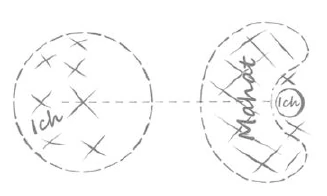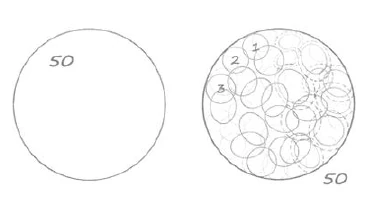Self-Knowledge and God-Knowledge I
Theosophy, Christology and Mythology
GA 90a
13 August 1904, Berlin
Automated Translation
LII. Ancient Wisdom
What the original state of what is called “ancient wisdom” was and how it came to earth is today's topic.
There are two kinds of knowledge and realization. Let us imagine the inventor of a clock: he makes one, two, three clocks according to the plan that was originally present in his mind. First there was the thought, then the actual reality. This is one way of knowing something.
To get to know the other way, let us imagine that the watchmaker has died; the watches are there and someone else studies them, figures out the plan and makes other watches. He has the same knowledge but has obtained it in a different way; for him, the sensory perception was first, then the idea; for the other man, the idea was first.
These two ways of acquiring knowledge also exist in the great universe. Such a thought, which corresponds to the laws of reality and is there before the sensory object, is called “intuitive thought”. It is born of the spirit itself, a child of the mental world. The other is a child of the sensory world, it is called “inductive thought.
Now let us see how the difference between the above and the disciples would manifest itself. The inventor will be able to communicate his thoughts because he is the shaper, the creator, because he was there when the sensual arose from the mental. The one who has imitated will also / gap in the transcript /
The same difference is between the first teachers of humanity and all later ones. For the first teachers of humanity were involved in creation, were among those who formed, they participated when the world was still a cosmic thought. They [gap in the transcript]
The first Arhat or Maha were involved in the creation of the world. In the middle of the third root race, when the human kingdom came into being, A also embodied himself.
They brought knowledge from the workshop with them, and that is “ancient wisdom”; they brought with them what they had experienced.
The knowledge that one gains afterwards is the same as that which the original great spirits have from the laws of creation themselves. [Gap in the transcript] If you really know something, then you also have the laws by which the world is created. Manas and Mahat are therefore the same in content. Only Manas is in us: I. And Mahat is spread out as a tableau over the whole world. Only the way they are is different, the content is the same. The more we increase in knowledge, the more /gap in the transcript]
What was taught at that time from the creative activity of the sculptors was the first wisdom, and it is therefore more than all science can acquire. This occult sentence, that the world has its origin in cosmic thoughts and that knowledge culminates in human thought formation.
The I enters into the formation of the world; outside of the I - Mahat. The I, the creator, encompasses Mahat. The development consists in the I expanding its sphere over the whole of Mahat, and in the end Mahat itself is within the I. What is the difference? Beginning: Mahat is outside of the I, end: Mahat is in the I.
The only difference between the beginning and the end is that the ego sacrificed itself as a special being and, as a result of this sacrifice, acquired Mahat as its content.
The process of world formation consists in the fact that the I, which was previously excluded from Mahat, afterwards has Mahat as its content. Not Mahat, but the I has undergone a development. Meaningful sentence: The world is enclosed in cosmic thought formation [gap in the transcript], the I is outside.
This is only partly true, because in reality the ego is a part of Mahat. With us, every thought is a part of Mahat; let us try to symbolize one as content. Let us take the sentence: Evolution consists in the fact that each part of Mahat grows to such an extent that it becomes identical with the whole Mahat. The assimilation of all individuals to the whole Mahat takes place. The great sacrifice takes place. The whole Mahat gives its essence to all parts, that is development. The purpose of the world is that the whole gives its essence to each of its parts. It is certain that the whole was perfect at the beginning; but if it had no parts, it would remain as it is. Since it has them, it has given each of the parts its whole being, so that its own perfection is ultimately contained in each of its parts.
Beginning: Mahat is outside the “I”
End: Mahat is in the “I”
The only difference between the beginning and the end is that the “I” sacrificed itself as a separate being and, as the result of this sacrifice, received Mahat as its content.

Evolution consists of each part of Mahat growing to such an extent that it becomes identical with the whole Mahat. The “great sacrifice” takes place: the whole Mahat gives its essence to all its parts. This is development.

LII. Uralte Weisheit
Wie eigentlich ursprünglich das beschaffen war, was man «Uralte Weisheiv nennt und wie sie auf die Erde gekommen ist, ist das heutige Thema.
Zwei Arten von Wissen und Erkenntnis gibt es. Denken wir uns den Erfinder einer Uhr -, er macht eine, zwei, drei Uhren nach dem Plan, der ursprünglich bei ihm vorhanden war. Es war also erst der Gedanke, dann kam die reale Wirklichkeit. Dies ist eine Art des Wissens von einer Sache.
Um die andere Art kennenzulernen, wollen wir uns denken, dass der Uhrmacher gestorben sei; die Uhren sind da und ein anderer studiert sie, findet den Plan heraus und macht andere Uhren. Er hat dasselbe Wissen, aber auf andere Art erhalten; für ihn war zuerst die Sinnesuhr, dann die Idee, für den andern zuerst die Idee.
Diese zwei Arten, Wissen zu erwerben, sind auch im großen Weltall vorhanden. Solch einen Gedanken, der den Gesetzen der Wirklichkeit entspricht und da ist vor dem Sinnesobjekt, nennt man «Intuitiver Gedanke. Er ist aus dem Geiste selbst geboren, ein Kind der mentalen Welt. Der andere ist ein Kind der Sinneswelt, man nennt ihn «Induktiver Gedanke.
Jetzt wollen wir sehen, wie sich der Unterschied ausmachen würde zwischen den Vorigen und den Schülern. Der Erfinder wird seine Gedanken mitteilen können, weil er Bildner, Schöpfer ist, weil er dabei war, als aus dem Mentalen heraus das Sinnliche entstand. Der, welcher nachgebildet hat, wird auch /Lücke in der Mitschrift]
Derselbe Unterschied ist zwischen den ersten Lehrern der Menschheit und allen späteren. Denn die ersten Lehrer der Menschheit sind mitbeteiligt gewesen an der Schöpfung, sind mit die Bildner gewesen, sie haben, als die Welt noch kosmischer Gedanke war, mitgewirkt. Sie [Lücke in der Mitschrift]
Die ersten Arhat oder Maha sind mitbeteiligt gewesen an der Schöpfung der Welt. In der Mitte der dritten Wurzelrasse, als das Menschenreich entstand, verkörperten sich auch A [Lücke in der Mitschrift]. Sie brachten Wissen aus der Werkstätte mit, und das ist «uralte Weisheiv; Miterlebtes brachten sie.
Die Erkenntnis, die man hinterher gewinnt, ist dieselbe wie diejenige, die die ursprünglichen großen Geister aus den Schaffensgesetzen selbst haben. [Lücke in der Mitschrift] Wenn man wirklich etwas weiß, dann hat man auch diejenigen Gesetze, nach denen die Welt geschaffen ist. Manas und Mahat ist daher dasselbe dem Inhalte nach. Nur Manas ist in uns: Ich. Und Mahat ist ausgebreitet als Tableau über die ganze Welt. Nur die Art zu sein, ist verschieden, der Inhalt ist derselbe. Je mehr wir zunehmen an Wissen, desto mehr /Lücke in der Mitschrift]
Was damals aus der schöpferischen Tätigkeit der Bildner gelehrt worden ist, war die erste Weisheit, und sie ist deshalb mehr, als was alle Wissenschaft erwerben kann. Dieser okkulte Satz, dass die Welt in kosmischen Gedanken ihren Ursprung hat und dass die Erkenntnis in menschlicher Gedankenbildung gipfelt /Lücke in der Mitschrift]
Das Ich tritt ein in die Weltenbildung; außerhalb des Ich - Mahat. Das Ich, der Bildner umfasst Mahat. Die Entwicklung besteht darin, dass das Ich seine Sphäre über den ganzen Mahat ausdehnt, und am Ende ist Mahat selbst im Ich darinnen. Worin besteht der Unterschied? Anfang: Mahat ist außer dem Ich, Ende: Mahat ist in dem Ich.
Anfang und Ende unterscheiden sich somit nur dadurch, dass das Ich sich als Sonderwesen geopfert hat und als Gewinn dieses Opfers Mahat als Inhalt erworben hat.
Der Weltbildungsprozess besteht darin, dass das Ich, das vorher ausgeschlossen war von Mahat, hinterher Mahat zu seinem Inhalt hat. Nicht Mahat, sondern das Ich hat eine Entwicklung durchgemacht. Bedeutungsvoller Satz: Die Welt ist in kosmischer Gedankenbildung geschl [Lücke in der Mitschrift], das Ich draußen.
Das ist nur zum Teil wahr, denn in Wirklichkeit ist das Ich ein Teil von Mahat. Bei uns ist jeder Gedanke ein Teil von Mahat; versuchen wir uns einen als Inhalt zu symbolisieren. Nehmen wir den Satz: Die Evolution besteht darinnen, dass jeder Teil von Mahat soweit wächst, dass er mit dem ganzen Mahat identisch wird. Es geschieht die Anähnlichung aller Einzelnen an den ganzen Mahat. Es geschieht das große Opfer. Der ganze Mahat gibt sein Wesen an alle Teile ab, das ist Entwicklung. Zweck der Welt besteht darin, dass das Ganze sein Wesen an jeden seiner Teile abgibt. Gewiss ist, dass das Ganze am Anfang vollkommen war; aber hätte es keine Teile, würde es bleiben wie es ist. Da er sie hat, hat er jedem der Teile sein ganzes Wesen abgegeben, damit seine eigene Vollkommenheit am Ende in jedem seiner Teile enthalten ist.
Anfang: Mahat ist außer dem «Ich»
Ende: Mahat ist in dem «Ich»
Anfang und Ende unterscheiden sich somit nur dadurch, dass das Ich sich als Sonderwesen geopfert hat, und als Gewinn dieses Opfers Mahat als Inhalt erhalten hat.

Die Evolution besteht darinnen, dass jeder Teil von Mahat so weit wächst, dass er mit dem ganzen Mahat identisch wird. Es geschieht das «große Opfer: Der ganze Mahat gibt sein Wesen an alle seine Teile ab. Das ist Entwicklung.


